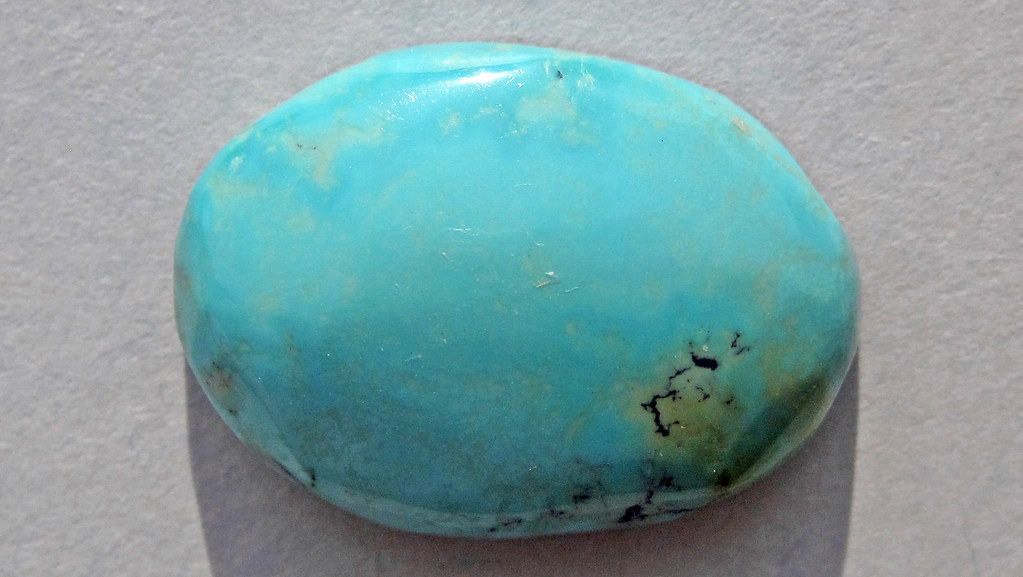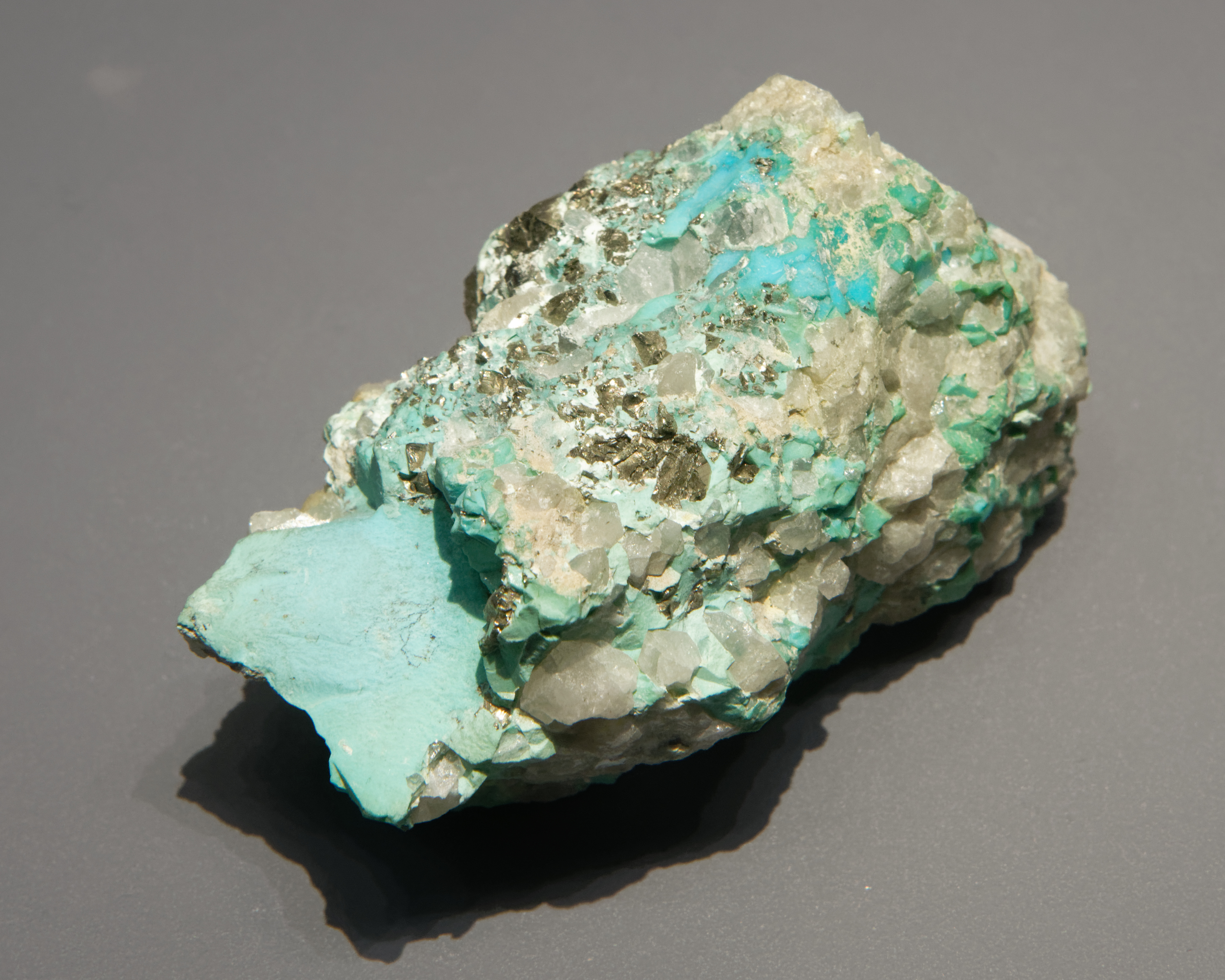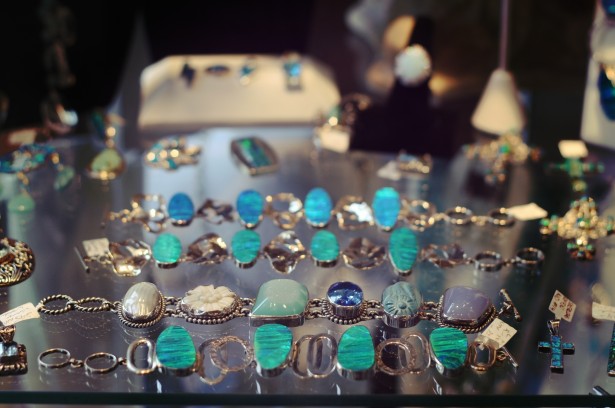
Turquoise has been mined by Native Americans about 1,200 years before the Spanish arrived. For some tribes, turquoise was a representation of strength, skill, and in some cases invincibility. Even some Native Americans would create weapons and houses made with turquoise. It is a highly prized stone throughout many tribes. It was known as the "sky stone" or sometimes the "fallen sky stone" because the Natives that lived in harsh conditions (typically drier areas) would rejoice when there was rain and it was absorbed into the earth. Medicine men would keep turquoise in their bundles because it possesed the powers of healing. To Native Americans, turquoise was more important and valuable than gold.
Whichever environment a turquoise stone is in, will reflect in what color it will be. For exmple, aluminum can turn it green and zinc makes a yellowish green. The highest quality of turquoise is typically found near the surface of the earth due to the elements exposing it to the weather, it creates a unique ligthened appearance.

Since the Navajo learnt how to work with silver and iron from the Mexicans, they quickly became known for their craft in silver and turquoise jewelry. Very common and important styles of Navajo jewelry include "Naja," "Heishi" necklaces, Squash blossom necklaces, and turquoise inlay rings. In traditional Navajo culutre, turquoise jewelry mainly consisted of only silver and turquoise. They would use large stones to focus the piece on the natural quality of the turquoise stone itself. Navajo shepards would wear turquoise beads to protect them from storms. It is also said that life began when the fist man and women used a stone disk edged with turquoise which created the sun. In Navajo tradition, if turquoise was thrown into the air or water, it was known to help connect a person in prayer with the Creator of rain or the Wind Spirits.

The Apaches would primarily associate turquoise with skill, strength and invincibilty. It was known that the Apaches would attach pieces of turquoise stone onto their bows and guns to enhance their percision as warriors and hunters.They placed the turquoise on their weapons so that their warriors and hunters would not get harmed in battle. The Apaches would also relate the turquoise stone to the rain that is found at the end of the rainbow.

The Zuni associated turquoise with the earthly elements. For example they would associate green turquoise with the female figure and the earth, whereas blue turquoise represented the male figure and the sky. They often carved turquoise into amulets and made them into shapes that were suitable for jewelry making. Just like the Navajo, they began to incorporate into their jewelry making around 1890. By 1930, it became the Zuni's main source of income.

| Back to page 1 | Go to page 3 |
|---|